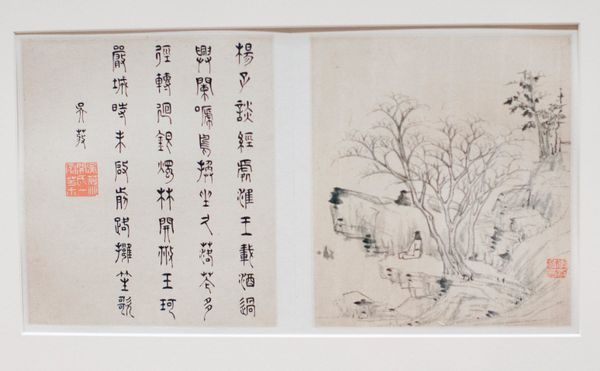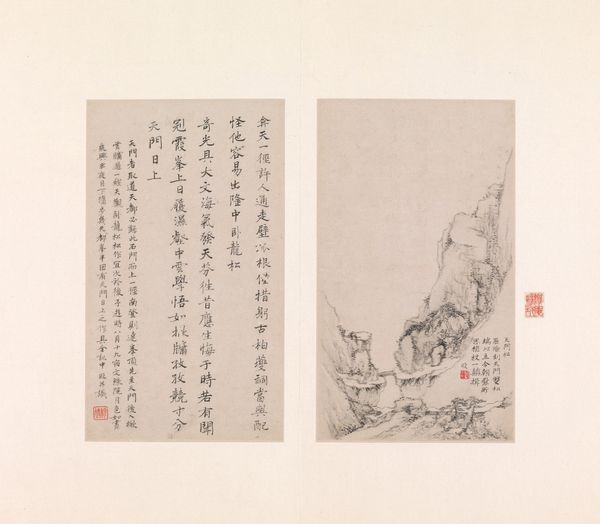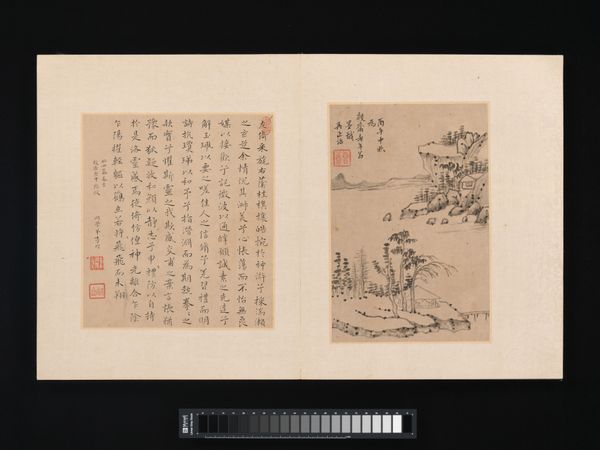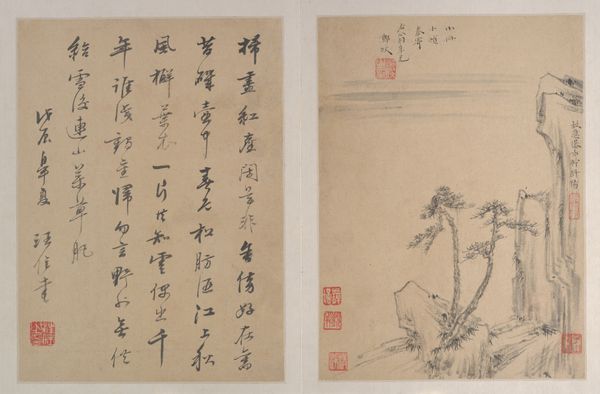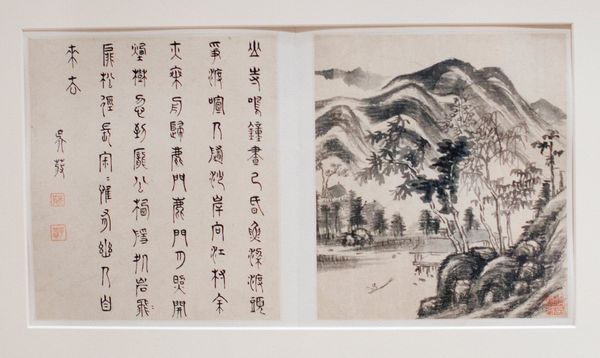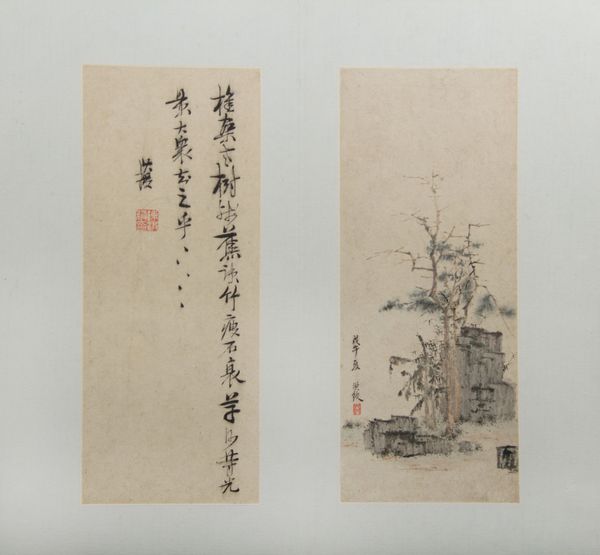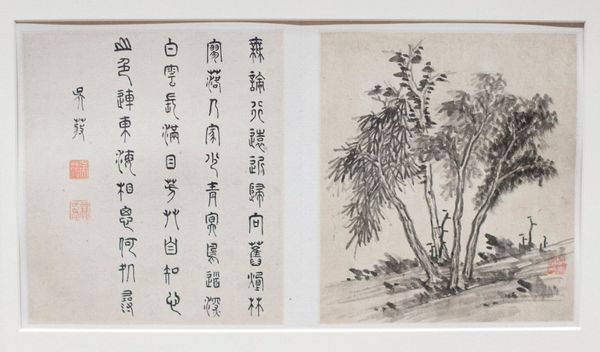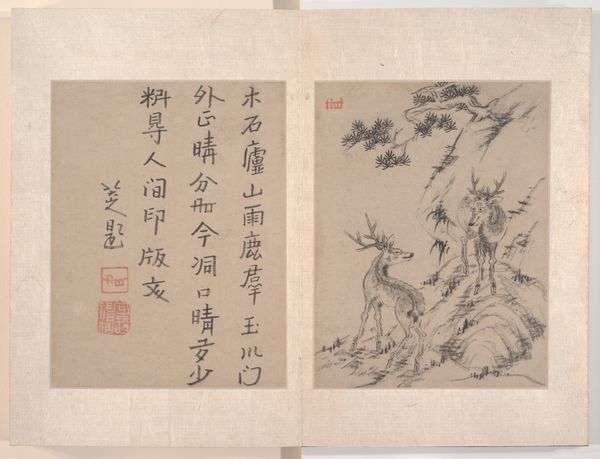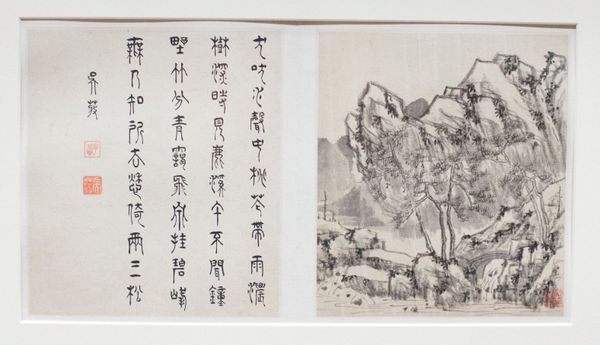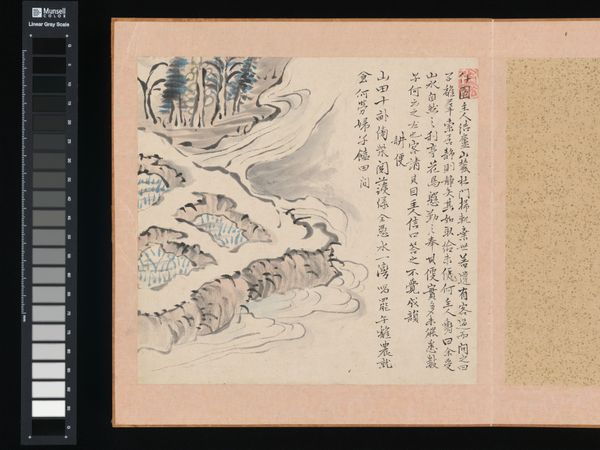
drawing, paper, ink-on-paper, ink
#
drawing
#
asian-art
#
landscape
#
paper
#
ink-on-paper
#
ink
#
geometric
#
abstraction
#
china
#
line
#
calligraphy
Dimensions: 7 1/8 x 6 1/4 in. (18.1 x 15.88 cm) (image, each)10 15/16 x 16 3/4 in. (27.78 x 42.55 cm) (mount, overall)14 x 18 in. (35.56 x 45.72 cm) (mat)
Copyright: Public Domain
Curator: These are two album leaves, dating back to 1621, from a landscape album by Li Liufang. They are executed in ink on paper, currently residing here at the Minneapolis Institute of Art. Editor: There's a powerful serenity in these compositions. The soft greys against the blank paper evoke a misty landscape. It makes me wonder about the stories embedded within it, what experiences might have shaped it. Curator: Li Liufang was a prominent figure of the late Ming Dynasty. What intrigues me is the method; he often directly referenced earlier artists and explored various brushwork styles within one album. The very *making* of these paintings, the conscious choices about technique, becomes a dialogue with tradition. The water source that created the ink that touched this paper! The tools that moved it! These are choices with power. Editor: Exactly. Considering the tumultuous times, a landscape offers not only escape but a visual assertion of enduring values—philosophical reflection on humankind's place in the cosmos in the face of rapid dynastic decline. Were there ecological implications tied to societal decline, and how might we see this landscape interacting with larger concepts of community and state? Curator: Notice the layering in the strokes— it almost looks gestural. But this apparent freedom requires tremendous labor, this skill is gained with repetitive and careful brushstrokes across potentially many earlier failed attempts at this type of rendering. And consider the socio-economic context of artistic production: the materials sourced, the patronage that sustained the artist, the dissemination of these images—were they primarily viewed by an elite circle? Editor: Yes, that resonates. The ink, seemingly homogenous, becomes a powerful signifier. Ink itself becomes imbued with a kind of morality: What did it *mean* to turn towards nature in this way? Or, even, who has the literal *ability* to perform such actions? How can we apply these inquiries in the now? The seemingly simple landscape suddenly opens onto multiple critical horizons! Curator: Seeing them both side-by-side I'm noticing what seems to be two versions of mark making. Are there clear decisions being made in the application? What did the artist want the viewership to recognize and understand about this decision? I now wonder more about the types of labor present in the album. Editor: Absolutely, the album's material presence demands our engagement with layered histories and invites continued exploration, in turn illuminating something vital about ourselves and our relationships with these stories, today.
Comments
minneapolisinstituteofart almost 2 years ago
⋮
Li Liufang was a painter of the late Ming dynasty. He painted mostly in small formats, playing with ink and trying to channel the creative essence of certain old painting masters rather than copying their formal patterns. Most of his works look like improvised sketches, executed with fresh spontaneity. This album contains examples of Li’s early style—spare, linear compositions, in which he used less ink for thinner, fainter lines—as well as his later style, with its rich, inky brushwork.
Join the conversation
Join millions of artists and users on Artera today and experience the ultimate creative platform.

